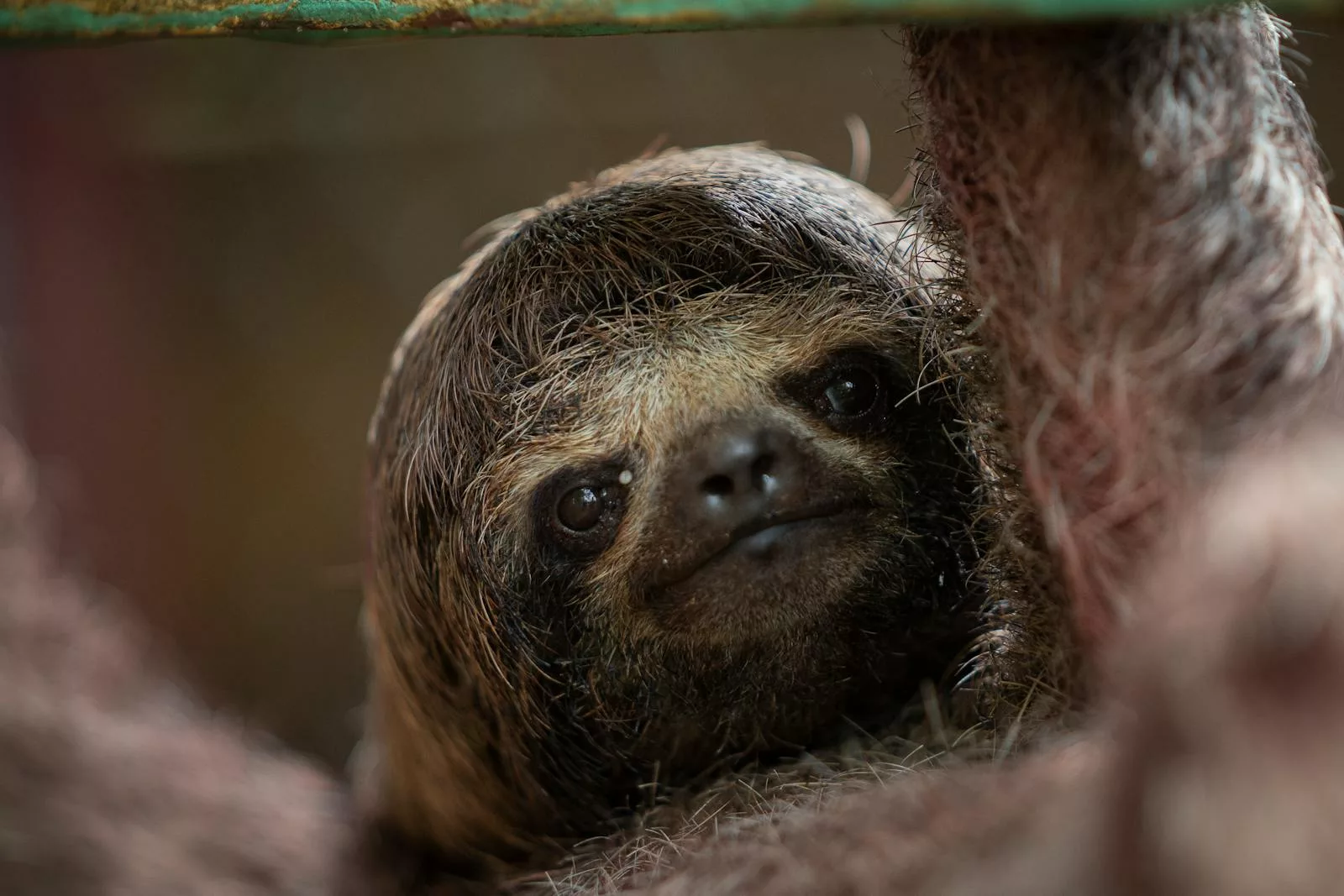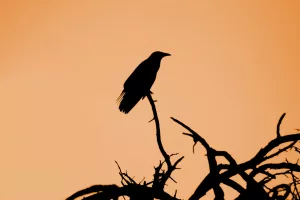Sloths, with their leisurely movements and perpetual smiles, are some of the most endearing creatures in the animal kingdom. Native to the rainforests of Central and South America, these fascinating animals have unique adaptations and behaviors that make them stand out among mammals. Though often misunderstood as lazy, sloths are highly specialized creatures perfectly suited to their arboreal lifestyle.
This article delves into 15 captivating facts about sloths, revealing their remarkable biology, evolutionary history, and vital role in their ecosystems. By the end, you’ll have a newfound appreciation for these gentle and mysterious creatures.
1. Sloths Are Among the Slowest Animals on Earth
Sloths are synonymous with slow movement, traveling at a top speed of just 0.15 miles per hour on the ground. This sluggish pace is a survival strategy rather than a flaw. By moving slowly, sloths conserve energy and avoid detection by predators like harpy eagles and jaguars.
Their slow metabolism is directly tied to their diet, which consists mainly of nutrient-poor leaves. Digesting this food takes an extraordinary amount of time—sometimes up to a month for a single meal to pass through their system. Their deliberate pace helps them make the most of their limited energy intake.
2. They Spend Most of Their Lives Upside Down
Sloths are true arboreal specialists, spending the majority of their lives hanging upside down in trees. Their curved claws, which can grow up to four inches long, act like natural hooks, allowing them to grip branches securely without expending energy.
This inverted lifestyle influences every aspect of their biology. For example, their internal organs, including their stomachs and lungs, are positioned in a way that reduces strain while hanging. This adaptation makes their upside-down existence both comfortable and efficient.
3. Sloths Come in Two Varieties: Two-Toed and Three-Toed
There are six species of sloths, divided into two main types: two-toed sloths (Choloepus species) and three-toed sloths (Bradypus species). Despite their names, both types have three toes on their hind limbs—the distinction lies in the number of fingers on their front limbs.
Two-toed sloths are generally larger and faster (by sloth standards) than their three-toed counterparts. They also have a more varied diet, occasionally consuming fruits and small animals, while three-toed sloths primarily stick to leaves.
4. Their Fur Is a Miniature Ecosystem
A sloth’s fur is more than just a protective coat—it’s an entire ecosystem. Their dense, coarse fur hosts a variety of organisms, including algae, fungi, and insects. The algae give some sloths a greenish tint, providing natural camouflage that helps them blend into the foliage.
Their fur also harbors moths and beetles, some of which rely exclusively on sloths to complete their life cycles. When a sloth descends from the trees to defecate, these insects lay their eggs in the dung, ensuring the next generation can thrive. This symbiotic relationship highlights the intricate connections between sloths and their environment.
5. They Descend to the Ground Once a Week
Sloths spend almost all their time in trees, but they descend to the ground approximately once a week to defecate. This behavior is both fascinating and risky, as it makes them vulnerable to predators.
Scientists aren’t entirely sure why sloths take this risk, but one theory suggests it’s related to their fur ecosystem. By depositing their dung at the base of trees, they may help sloth moths complete their reproductive cycles, indirectly maintaining their algae camouflage.
6. They Are Surprisingly Strong Swimmers
Despite their slow and awkward movements on land, sloths are excellent swimmers. In fact, they can move three times faster in water than on the ground. Their long arms and powerful strokes allow them to navigate rivers and streams with ease.
Swimming is an important survival skill for sloths, as many rainforests are prone to flooding. It also allows them to move between trees or territories that are separated by water, showcasing their adaptability.
7. Sloths Have a Unique Neck Structure
Three-toed sloths possess an unusually flexible neck, with nine vertebrae compared to the seven found in most mammals, including humans. This adaptation allows them to rotate their heads up to 270 degrees, giving them a wide field of vision without needing to move their bodies.
This flexibility is particularly useful for detecting predators while remaining motionless, further enhancing their ability to avoid detection. Two-toed sloths, however, lack this specialized neck structure, relying more on their speed (relatively speaking) and hiding skills.
8. Their Metabolism Is Incredibly Slow
Sloths have one of the slowest metabolisms in the animal kingdom, which is essential for surviving on a diet of leaves that are low in nutrients and calories. This slow metabolism affects nearly every aspect of their lives, from their movement to their reproductive cycle.
Their low metabolic rate also means they generate very little body heat, making them highly dependent on their environment to regulate their temperature. This is why sloths are most commonly found in warm, tropical climates where their slow-paced lifestyle can thrive.
9. They Rely on Camouflage for Protection
Sloths are not equipped to fight or flee from predators, so their primary defense mechanism is their ability to remain hidden. Their slow movements and algae-covered fur help them blend seamlessly into the trees, making them difficult for predators to spot.
By avoiding detection rather than confronting threats, sloths demonstrate a unique survival strategy that relies on patience and stillness rather than speed or aggression.
10. Sloths Have a Long Evolutionary History
Modern sloths are the descendants of ancient ground sloths, some of which were massive. The most famous of these, the Megatherium, was roughly the size of an elephant and roamed the Americas until about 10,000 years ago.
Unlike their arboreal relatives, ground sloths were primarily terrestrial and grazed on vegetation. The transition to tree-dwelling lifestyles in modern sloths reflects their adaptation to a more specialized ecological niche.
11. They Have Extraordinarily Strong Grip Strength
A sloth’s grip is so strong that they can hang from branches for hours, even after death. Their curved claws and specialized tendons lock their hands in place, allowing them to rest without exerting energy.
This strength is crucial for their survival, as it enables them to remain suspended high in the canopy, out of reach of most predators. It’s also a key factor in their ability to navigate their arboreal habitats efficiently.
12. Sloths Have Poor Vision and Hearing
While sloths excel in many areas, their senses of vision and hearing are relatively weak. They are nearsighted and struggle to perceive fast-moving objects, which is why they rely heavily on their sense of smell and touch to interact with their environment.
Their limited sensory capabilities reinforce their reliance on camouflage and stillness to avoid detection, as they are not well-equipped to respond to sudden threats.
13. Sloths Have a Low Reproductive Rate
Sloths are slow not only in their movements but also in their reproduction. Females typically give birth to a single offspring after a gestation period of about six months. The mother cares for her baby for up to a year, during which time the young sloth learns to navigate the treetops and find food.
This low reproductive rate makes sloth populations particularly vulnerable to habitat loss and other environmental pressures, as they cannot quickly rebound from declines.
14. Sloths Are Essential to Their Ecosystems
Despite their slow pace, sloths play a vital role in maintaining the health of their ecosystems. Their algae-covered fur provides habitat for insects, which in turn contribute to nutrient cycling in the rainforest.
Additionally, by consuming leaves and dispersing seeds through their feces, sloths help promote plant growth and biodiversity. Their unique ecological role highlights the interconnectedness of rainforest life and the importance of preserving these habitats.
15. Their Smiles Are Just a Facial Structure
One of the most charming features of sloths is their constant “smile.” However, this expression is not a reflection of their emotions but rather the result of their facial structure. Their curved mouths create the appearance of a perpetual grin, adding to their lovable and endearing image.
While they may not actually be smiling, their relaxed demeanor and slow movements contribute to the perception of sloths as calm and content animals, further solidifying their status as one of nature’s most beloved creatures.
Conclusion
Sloths are more than just slow-moving mammals—they are marvels of evolution with adaptations that make them perfectly suited to their environment. From their unique grip strength and algae-covered fur to their role in rainforest ecosystems, sloths demonstrate the incredible diversity and complexity of life on Earth.
By understanding and appreciating these fascinating animals, we can better advocate for the protection of their habitats and ensure that sloths continue to thrive in the wild for generations to come. Their slow pace reminds us to take life one step—or crawl—at a time, appreciating the beauty and wonder of the natural world.




